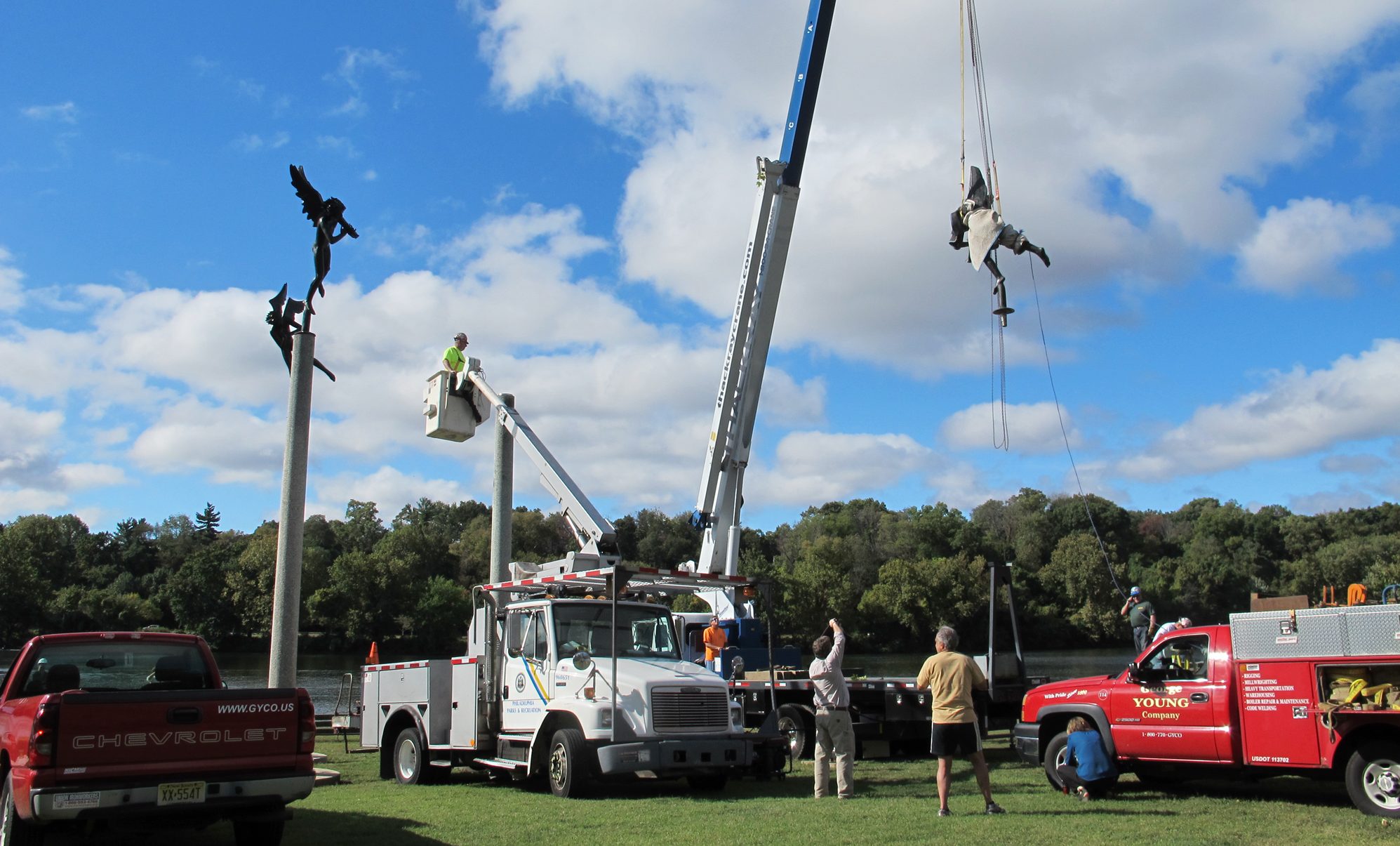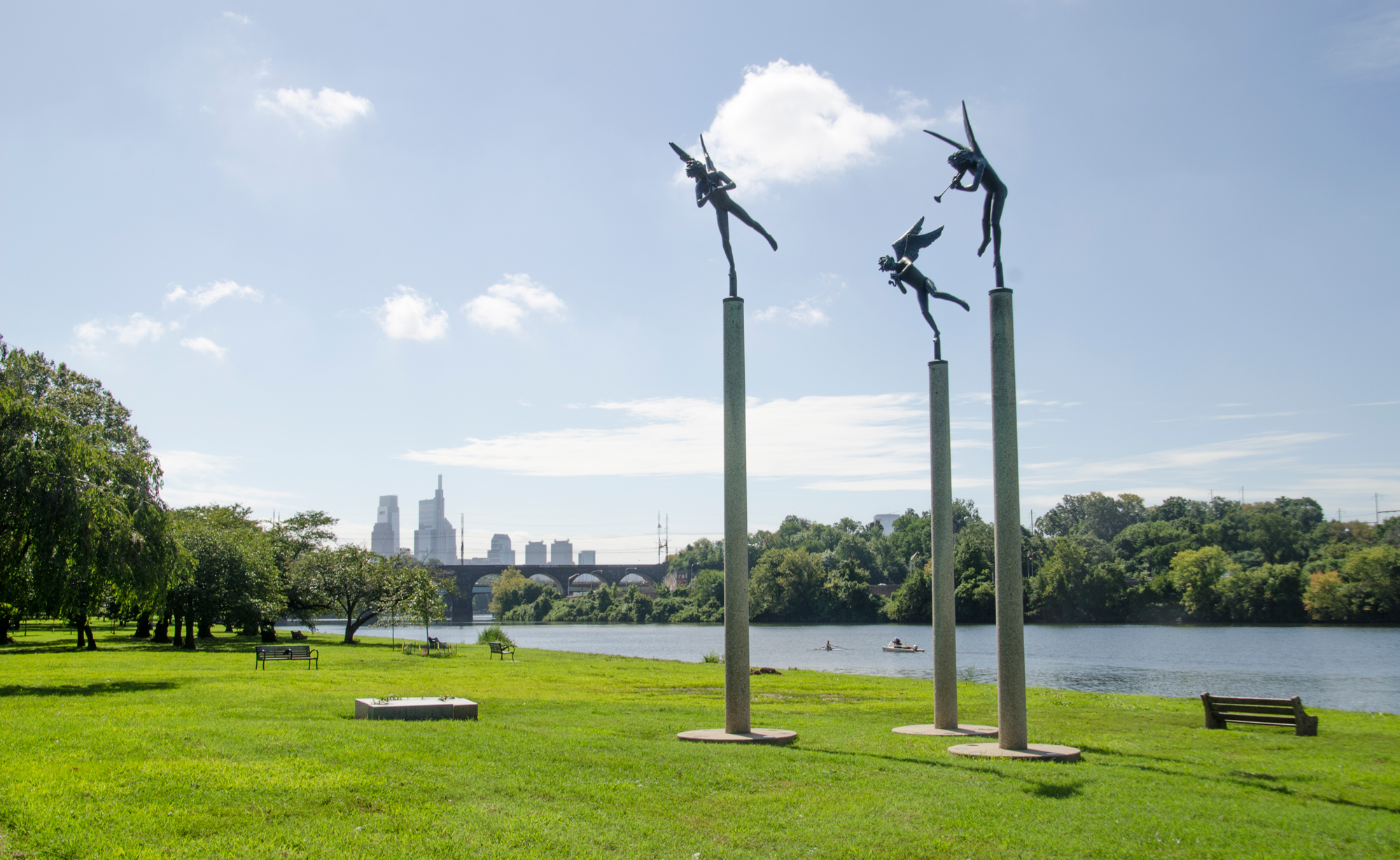
Seeing Double
Philadelphians may be surprised to learn that the Millesgården in Stockholm – the home-turned-museum of famed Swedish sculptor Carl Milles (1875-1955) – exhibits on their waterfront the exact same Playing Angels as the ones we have on Kelly Drive along the Schuylkill River. At Millesgården, these larger-than-life bronze angels fly high atop their pedestals as they do in Philadelphia, overlooking Sweden’s Vartan Harbor in the company of similar works by Milles. In Philadelphia, our three angels were installed almost 50 years ago, and have become a beloved sight and useful marker along the river for thousands of rowers, joggers, cyclists, and drivers who pass them every day in Fairmount Park.
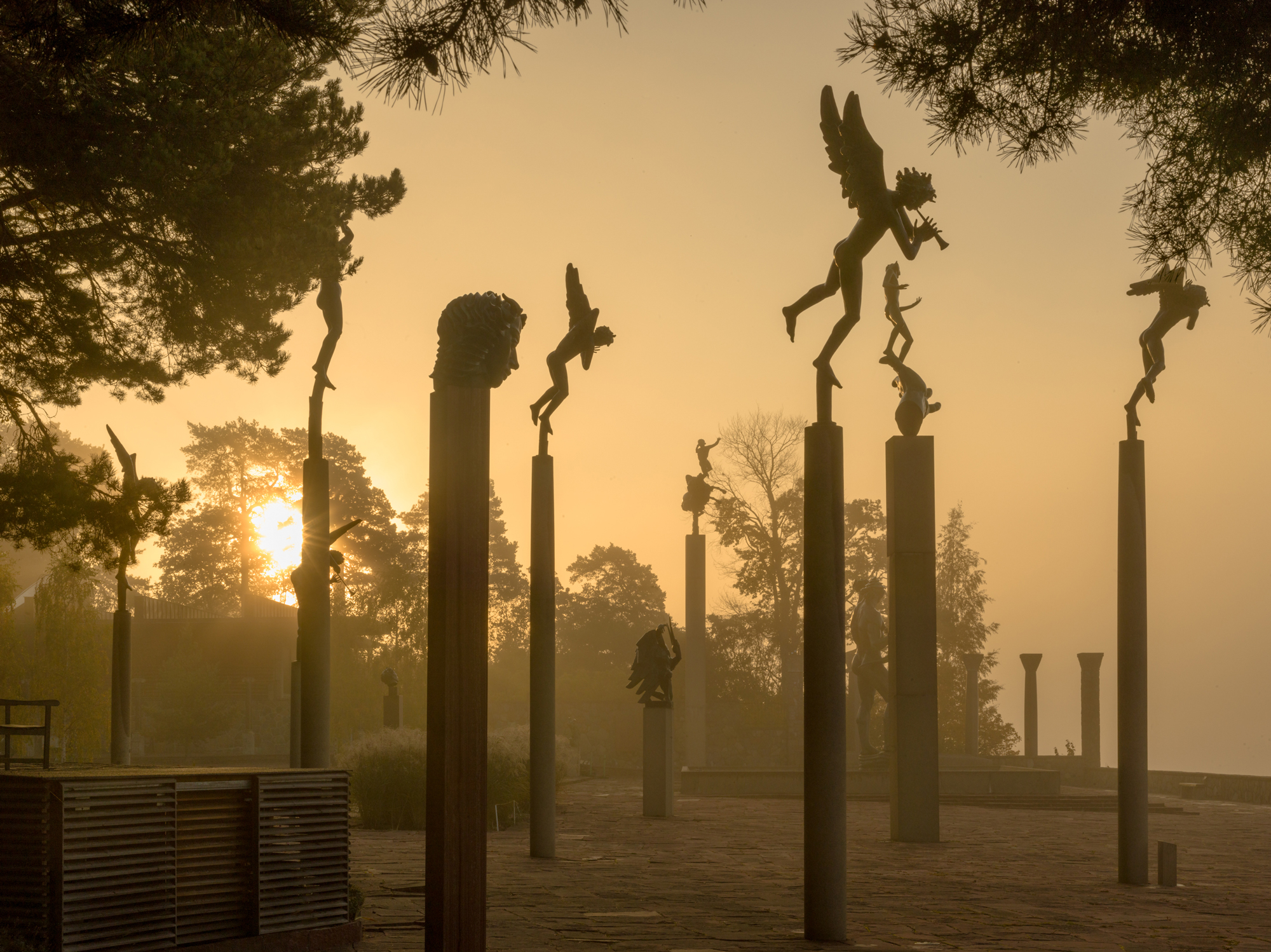
Impressed by a Visit to Millesgården
The Playing Angels in Philadelphia are in fact authorized casts of the originals at Millesgården – the art museum, sculpture park, and former home of Carl Milles – and were purchased and installed by the Association for Public Art (aPA, formerly the Fairmount Park Art Association) in 1968 and 1972, respectively. The seed for this acquisition was planted in the 1960s when G. Holmes Perkins, a city planner and architect who was a trustee of our organization and head of the School of Architecture at the University of Pennsylvania, visited Millesgården. He was so impressed that he returned to Philadelphia convinced that the city should have an outdoor work by Milles. In 1967, the Association contacted Millesgården to see if anything was available for purchase, and there was: three bronze angels could be arranged from a deal that had fallen through – in Philadelphia.
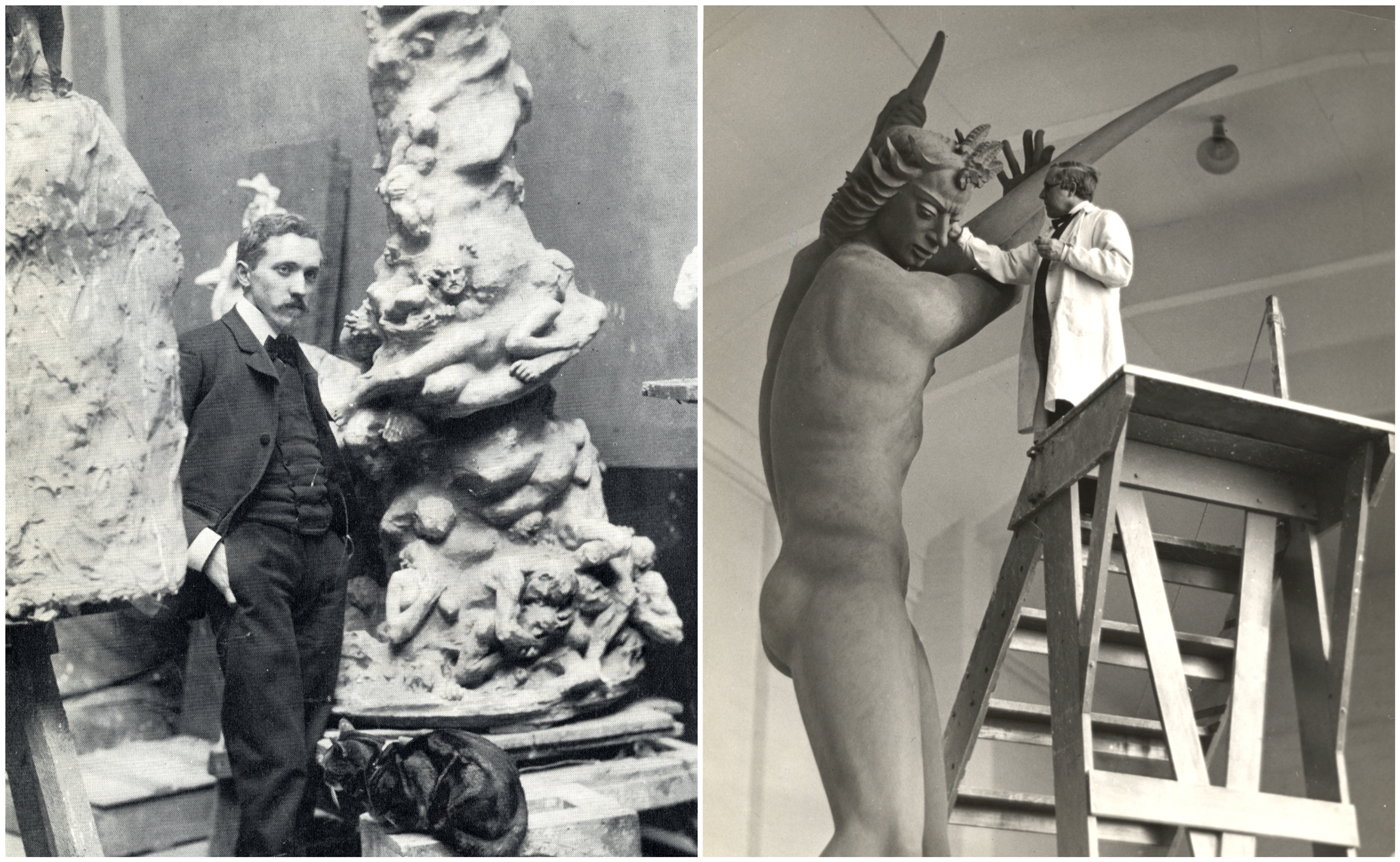
Deal Dissolves, Angels Divided, Opportunity Seized
It turns out that Carl Milles had originally created five of these angel musicians in 1949-1950 for a private site in Philadelphia – a nursery or nursery school – but the plans dissolved. As a result, one angel went to Kansas City, which became Mille’s William Volker Memorial Fountain, and a second angel went to Falls Church, Virginia, which became his Fountain of Faith. The remaining three angels were incorporated into Millesgården, which authorized second casts of the sculptures to be created for our organization to purchase.
Milles sculpted these angels and many others while he was head of the Department of Sculpture at the Cranbrook Academy of Art in Michigan from 1931 to 1951. “He made his first angel around 1920 for a graveyard for a friend, and from the 40s he made a lot of angels, skating angels and flying angels and playing angels – all kinds of angels,” says Millesgården Educational Director Maria Wiberg in our Museum Without Walls: AUDIO program for the artwork. While at Cranbrook, Milles – who became a U.S. citizen in 1945 – gained a reputation as one of America’s premier designers of major public fountains and bronzes. “He worked in these very heavy materials – bronze and stone – and he liked the contrast of playing them next to light materials, like water and air,” says Wiberg.
FINDING THE RIGHT SITE
Following the purchase, the angels remained in storage while the Association sought the perfect location. A committee was formed, silhouettes of the sculptures were made, and these were taken to various sites to see how they would look. JFK Plaza (“LOVE Park”) was considered, but the angels appeared dwarfed by the tall buildings. The committee settled on a highly visible spot on Kelly Drive where the sculptures created a focal point and were seen to their best advantage. Their placement on tall pedestals, similar to Millesgården, was planned by architectural firm Bower and Fradley (now BLT Architects). “We met on a beautiful sunny morning with the Association members to decide where to put them,” says John Bower in our audio program. “So I came out with a contractor early and we put them up and I figured we’d be out there for hours. They arrived, they took one look, and they said oh it’s perfect, let’s just leave them, so we never moved it after that, which is sort of unique. So the next thing was that the contractor welded them together and they’ve been that way ever since.”
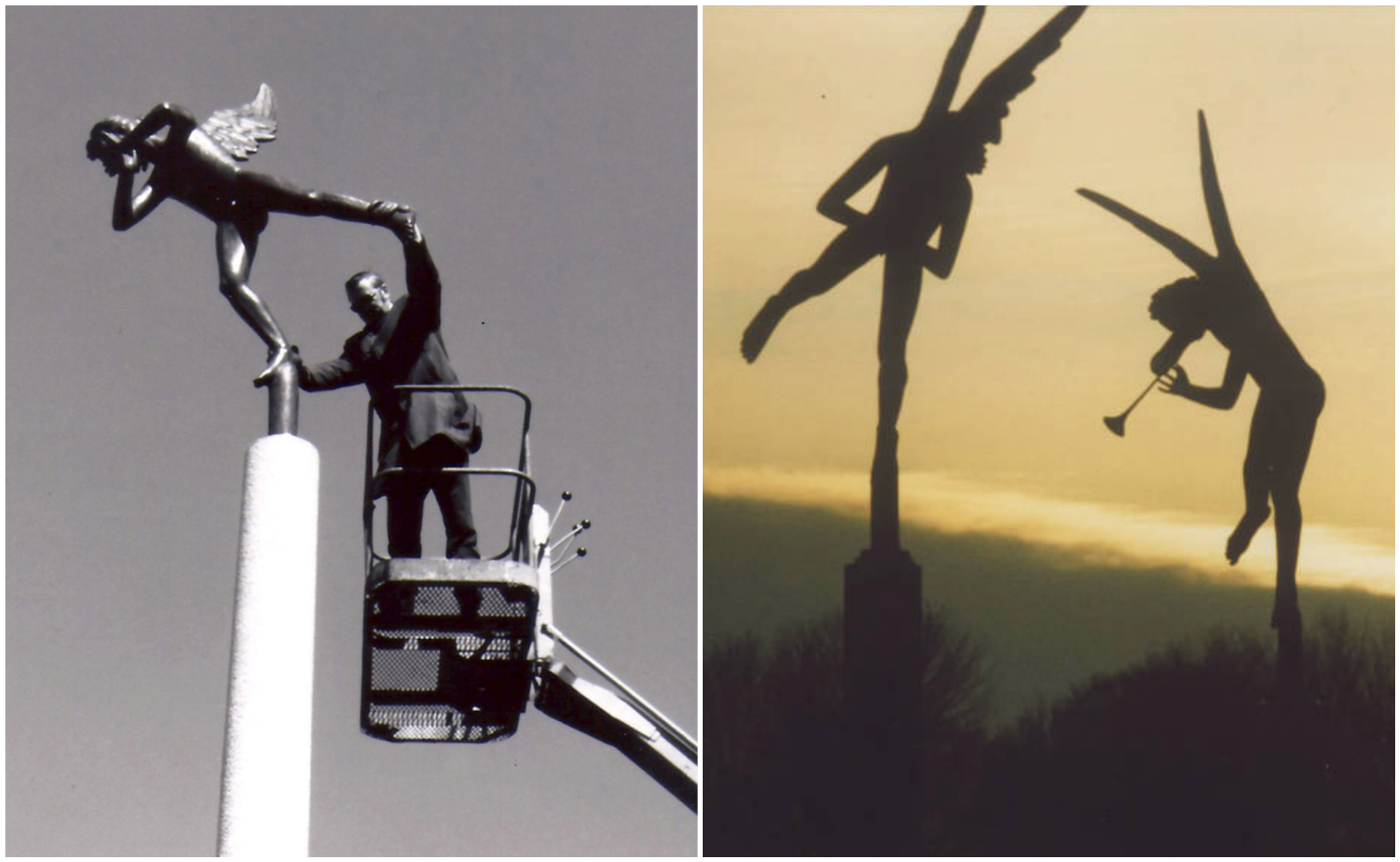
Conservation: Ensuring the Angels Can Be Enjoyed for Years to Come
After decades of being exposed to the elements, in the early 2000s the welds securing the Playing Angels to their bases began to fail, causing the angels to lift out of their pedestals. An emergency stabilization treatment was performed, but a permanent solution would eventually be needed to ensure the security of the sculptures and safety of pedestrians nearby. In 2014, a team from the City of Philadelphia’s Office of Arts, Culture and the Creative Economy (Creative Philadelphia) – which now owns the sculptures – temporarily removed the angels and re-engineered their failing anchoring systems after one angel was noticeably raised and tilting on its pedestal. While deinstalled, the angels received special conservation treatment to restore them from the effects of pollution and acid rain, helping to preserve them for future generations to enjoy along the river.
